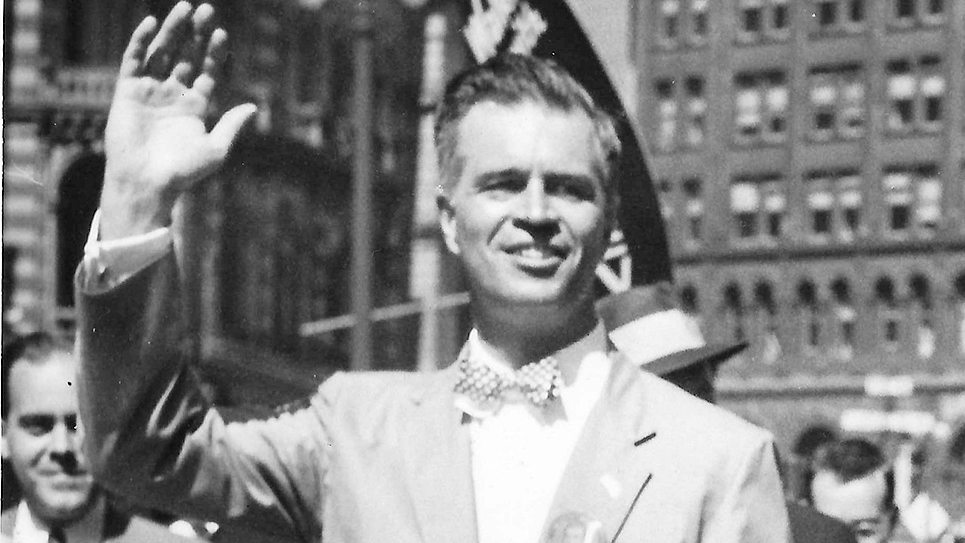By Tom Mattingly
“It’s not how many years a man has lived. It’s how many people are glad that he did.”
That’s the Bob Campbell storyline when you attempted to sum up a life that spanned 72 years and 19 days, one that ended on Nov. 18, 2017. It was a daunting task, but was well worth the effort. All the pieces are in front of us of a well-lived life that, when they’re assembled, paint an impressive picture.
“Impressive” may not be a strong enough word.
Bob was born in Pulaski and grew up in nearby Lawrenceburg. He was with the athletic department from 1990 until he retired in 2009. He had previously taught and coached at Doyle High School and worked with the Knoxville Blue Jays at Bill Meyer Stadium.
In 1994, he led the transition that took artificial turf off of Shields-Watkins Field after the 1993 Vanderbilt game and replaced that dreaded stuff with grass, what some people have called “sure-nuff’’ grass.”
As it was with any project Bob took on, it was never a job.
It was a calling.
He said he would never do a more meaningful project in his professional career. He always talked about having” stewardship” of the field. He always mentioned how he did it for the fans who lived and died with what happened each time the Vols played there. He loved the aura and mystique of Neyland Stadium and felt a responsibility to make the field the best it could be.
As the project progressed, Tennessee fans came in droves from Knoxville and elsewhere, asking him or one of his aides to let them see the field, to let them literally watch the grass grow.
His office was under the stadium’s south end, just around the corner from the visitors’ dressing room. It was in an out-of-the-way location, causing him to dub it the “Bat Cave.”
Prominent on the wall behind his desk was a picture of groundskeeper John Deanie Hoskins, who cared for the field from 1926 to 1961 and who left his entire estate to the athletic department. When Bob Neyland once asked Deanie if the grass would be ready when fall drills started, Hoskins had a ready response.
“My field is always ready,” he once told Neyland. “Can you say the same thing about your football team?’’
Deanie was his inspiration, reflecting the care the field has received over the years. Bob never met him, but knew how important Deanie was to the history of Tennessee football.
There were times on game day, long after nearly everyone had left the stadium, that Bob or son, Pete, would replace torn turf, mow the grass, and water the field. The field was his pride and joy, and he and his staff gave it their best efforts.
He was an honorary Tennessee Letterman’s T-Club member, the organization’s highest honor, and served as president of the Spores Turf Management Association (STMA) in 2003-04.
That led to a fascinating year, when I was his ghostwriter for his president’s messages, penned once a month during his time in office.
He would drop by and say, “Punch this up. I really need your help.”
After I had read it, it really didn’t need that much punching up. It was generally good to go. I was honored to be part of that process.
He was a sport purist. He loved the old venues in baseball, Crosley Field in Cincinnati, Tiger Stadium in Detroit, Fenway Park in Boston, and many others.
He was old-fashioned in his attitude toward sports.
He hated the modern-day sports scene, where there always had to be something going on, such as loud music, the endless promotions, advertisements dotting the expanse of the stadium, and the like. There were times, he said, you just wanted to talk with your neighbor about the game and savor the moment. He was big on savoring the moment.
He was a believer in Tennessee history and tradition, a steward of the Shields-Watkins Field turf.
“You think about all the great players who have played on this field and the great games played there. This field belongs to everybody who identifies with Tennessee tradition. It’s a special place.”
I remember going to the stadium on July 5, 1994, to see the new sod. There was a strong stand of grass covering the field. It smelled like a stadium. Birds were pecking at the grass, looking for whatever it is birds look for.
It was a marvelous sight. And still is.






